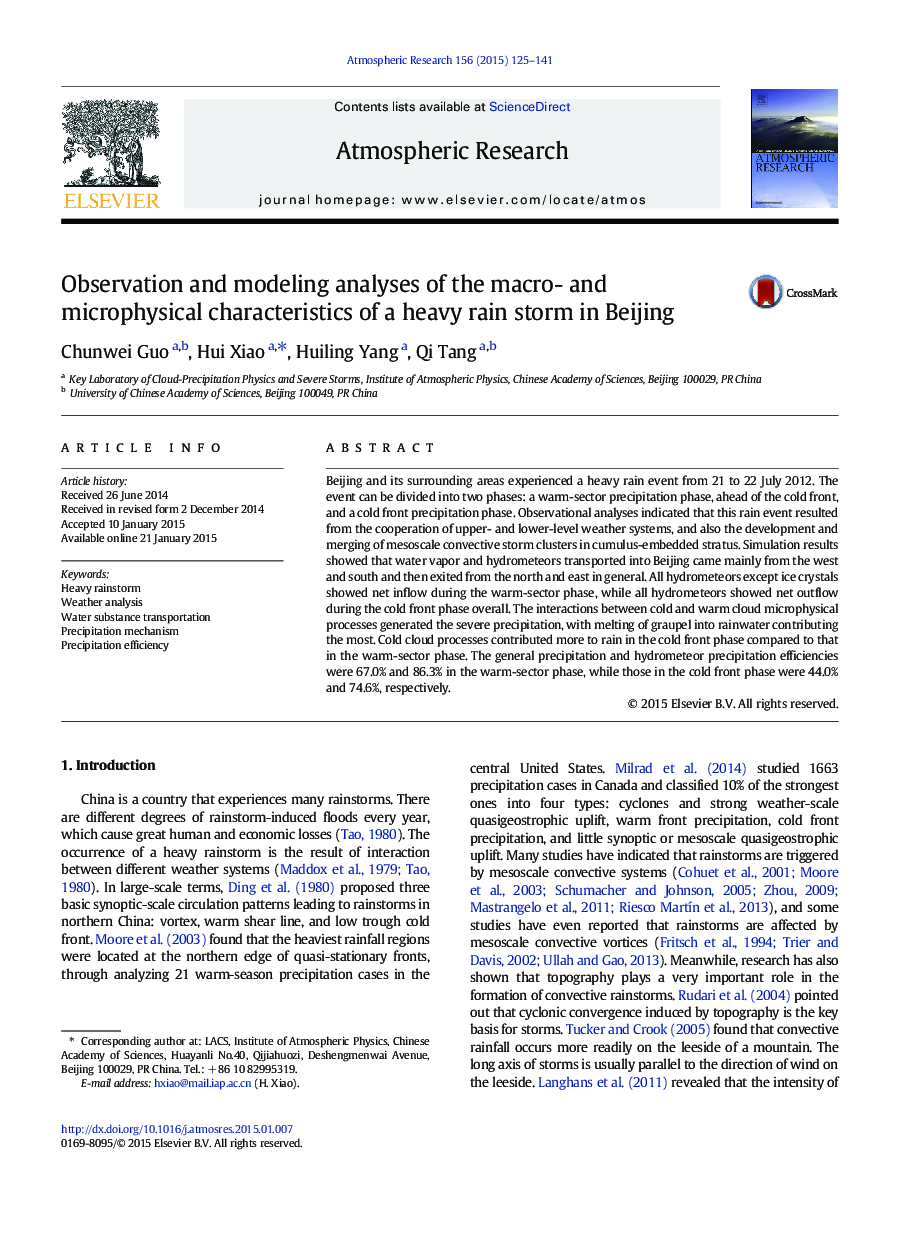| Article ID | Journal | Published Year | Pages | File Type |
|---|---|---|---|---|
| 6343349 | Atmospheric Research | 2015 | 17 Pages |
Abstract
Beijing and its surrounding areas experienced a heavy rain event from 21 to 22 July 2012. The event can be divided into two phases: a warm-sector precipitation phase, ahead of the cold front, and a cold front precipitation phase. Observational analyses indicated that this rain event resulted from the cooperation of upper- and lower-level weather systems, and also the development and merging of mesoscale convective storm clusters in cumulus-embedded stratus. Simulation results showed that water vapor and hydrometeors transported into Beijing came mainly from the west and south and then exited from the north and east in general. All hydrometeors except ice crystals showed net inflow during the warm-sector phase, while all hydrometeors showed net outflow during the cold front phase overall. The interactions between cold and warm cloud microphysical processes generated the severe precipitation, with melting of graupel into rainwater contributing the most. Cold cloud processes contributed more to rain in the cold front phase compared to that in the warm-sector phase. The general precipitation and hydrometeor precipitation efficiencies were 67.0% and 86.3% in the warm-sector phase, while those in the cold front phase were 44.0% and 74.6%, respectively.
Keywords
Related Topics
Physical Sciences and Engineering
Earth and Planetary Sciences
Atmospheric Science
Authors
Chunwei Guo, Hui Xiao, Huiling Yang, Qi Tang,
